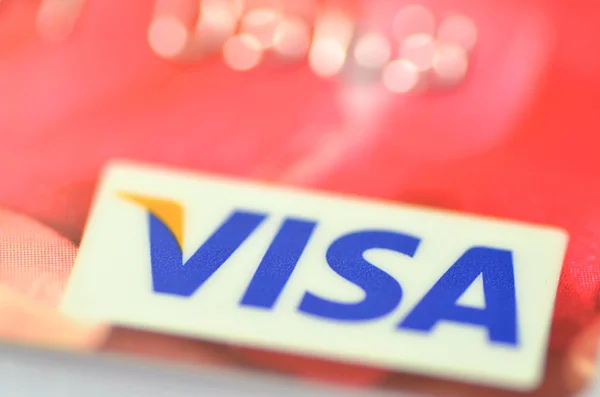
When running an ecommerce business, chargebacks can be a major issue that needs to be dealt with. When a customer challenges a charge on their credit card and the bank cancels the payment, it can be both expensive and time-consuming. Additionally, it can damage the relationship between you and payment providers. Fortunately, the introduction of the recent Visa chargeback regulations could make things less complicated for merchants. In this write-up, we will explore the implications of these new guidelines for your business.
Overview of Visa’s New Chargeback Guidelines
On April 15, 2023, Visa plans to update its requirements for reporting fraud. However, it may decide to change this at its discretion if it deems it necessary to allow for compliance.
Known as Compelling Evidence (CE) 3.0, this is a new standard of proof that Visa has introduced to reduce the number of invalid chargebacks and streamline the process for merchants and issuers.
The CE 3.0 ruleset from Visa is specifically designed for disputes that fall under the Visa reason code 10.4, which is labeled as “Other Fraud-Card-Absent Environment.”
Visa’s internal data has shown that friendly fraud (also known as first-party fraud) is a growing concern and accounts for up to 75% of all chargebacks! These occur when a customer disputes a legitimate transaction with their bank or credit card company. This can happen due to reasons like forgotten subscriptions or recurring payments, confusing billing descriptors, accidental transactions made by children using their parents’ devices, or even intentional attempts to get a refund.
High-risk merchants routinely face chargebacks and lose revenue due to friendly fraud.
That’s why Visa’s new chargeback guidelines for merchants are such a game-changer. Visa’s Compelling Evidence 3.0 (CE 3.0) program is designed to simplify the chargeback process and reduce fraud by requiring more detailed and accurate information to be included in chargeback requests.
How Does It Differ From Previous Guidelines?
Visa’s Compelling Evidence 3.0 is designed to help high-risk merchants with their chargeback disputes. Here are some new areas where it stands out from previous revisions:
- First, it provides merchants with more specific guidelines for what constitutes compelling evidence. This can help merchants build stronger cases when defending against chargebacks.
- The rules require the merchant to show two previous transactions made by the same cardholder, which occurred more than 120 days ago and share similar characteristics to the disputed charge.
- The idea behind the rules is that if a cardholder does not dispute a charge within 120 days, it is assumed to be valid. Therefore, if the issuing bank did not flag the charge as fraudulent during this timeframe, it is their responsibility and not the responsibility of the merchant or acquirer.
- Even though the burden of proof is on merchants which means they’ll need to provide more evidence to defend against chargebacks than they did under previous guidelines. But if collected through the right solutions, merchants can use customer authentication data, IP address, device id, and other types of documentation to prove validity of their claims.
- By providing more detailed evidence, merchants may be able to win chargeback disputes more easily.
- This is particularly helpful for high-risk merchants who are more likely to face chargebacks.
- If you’re a high-risk merchant, it’s worth looking into this program to see if it can help you reduce chargebacks and protect your bottom line.
According to TickleCharge’ chargeback experts, it is likely that other major card brands will also adopt Visa’s compelling evidence guidelines. Therefore, businesses that implement fraud prevention tools now can save valuable time and resources when these changes are implemented.
How Does New Chargeback Guideline From Visa Impact Merchants?
The new chargeback guideline from Visa, known as Visa CE 3.0, has a significant impact on merchants and their bottom line. The new visa chargeback guidelines may increase the workload for merchants as they need to collect more data and provide stronger evidence when disputing chargebacks.
However, implementing these best practices and payment gateway features can help them protect their revenue and prevent fraud and abuse in the payment system.
Here are some specific impacts and requirements merchants need to be aware of:
- Increased Chargeback Monitoring: With Visa CE 3.0, merchants must have more robust chargeback monitoring and reporting systems in place. This means investing in tools that can track and analyze chargeback trends, as well as identify and prevent fraudulent transactions.
- Stricter Compliance Requirements: Under Visa CE 3.0, merchants are required to comply with strict guidelines around fraud prevention, chargeback management, and dispute resolution. Non-compliance can result in hefty fines and penalties, impacting the merchant’s ROI.
- Limited Timeframes for Dispute Resolution: Merchants are now required to respond to disputes within strict timeframes, or risk forfeiting the dispute altogether. This means having the right payment gateway features and tools in place to quickly and accurately respond to disputes.
- Increased Liability for Chargebacks: With Visa CE 3.0, merchants are now responsible for a higher percentage of chargeback liability. This means merchants need to be even more vigilant about preventing chargebacks and investing in the right tools and systems to do so.
Merchants who fail to comply with the new guidelines risk losing revenue, damaging their reputation, and incurring costly fines and penalties.
To prepare themselves, merchants must invest in the right payment solutions which include robust fraud prevention tools, chargeback management systems, and dispute resolution processes that are in line with Visa CE 3.0 guidelines.
How Does Visa’s Chargeback Guidelines Impact Consumers?
Visa’s new chargeback guidelines will have a significant impact on customers who have previously engaged in ‘friendly fraud,’ as it will be more difficult to dispute legitimate transactions and get refunds.
Under the new policy, customers would have to provide more detailed evidence to support their claims, such as transaction records and communications with merchants. This will make it harder for them to falsely dispute transactions. Customers who engage in ‘friendly fraud’ may find that their disputes are rejected more frequently, and they may be subject to penalties or even legal action if they continue to dispute legitimate transactions.
Conclusion
Overall, merchants (both high risk and low risk) will benefit from the new Visa chargeback dispute resolution policy, as it will help to reduce the number of chargebacks they receive and the associated costs.
In return, it may possibly lead to lower prices for customers, as merchants will not have to pass on the costs of chargebacks to their customers.
Looks like a win-win to us!
TickleCharge is offering a limited-time offer of a free consultation* to give you all the assistance needed on understanding chargeback protection services (in line with Visa’s latest guidelines) for your specific business.
*Limited to the first 20 respondents.



